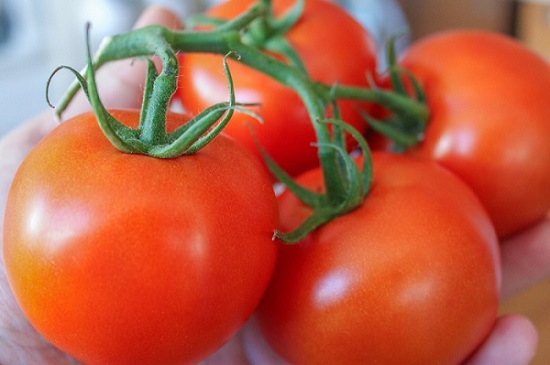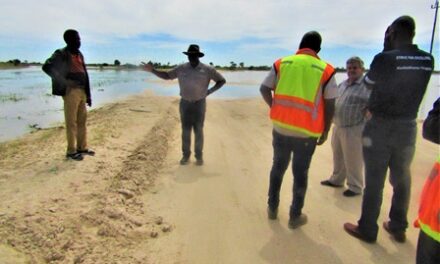
With the season in Namibia turning from Winter to Spring, it’s advisable that everyone must turn to producing tomatoes, on big scale in farms and large agricultural projects or on small scale such as backyard gardens and school gardens.
This is because, according to Mr Hanks Saisai, tomatoes are a very popular commodity that is used in everyday home recipes and as a complimentary ingredient in most vegetable salad dishes.
Saisai, who is Agribank’s technical advisor on crops and poultry, says that tomatoes, scientifically known as Lycopersicon esculentum, are grown during spring and summer (September to the end of April) for their fleshy fruits that are rich in taste and Vitamin C.
“Tomatoes are either determinant or indeterminant plants depending on which cultivar you choose to grow. Determinant varieties grow into a bush while indeterminant tomatoes grow over 2 metres in height and yield about 40 to 70 fruits per plant,” Saisai says.
According to Saisai it’s actually easy to grow tomatoes. “Soil preparation and sowing of tomato seeds is simple. Tomatoes grow in most soil types, however, to achieve optimum yield good soil preparation should done 2 to 3 weeks before planting. Simple but crucial steps to growing tomatoes are:
- Tilling the soil to a depth of 20 to 30 cm and incorporation of cattle manure before planting may prove essential during the growing season.
- Plant in seed trays containing Hygromix which is a suitable growth medium for most vegetable seeds at a depth of at least 1 to 2 cm.
- Careful irrigation using a watering can in a nursery is recommended and after 10 to 14 days, germination and emergence of the seedlings should occur.
- Transplanting can be done when the seedlings are about 3 weeks old and are about 12 to 15 cm tall.
- The seedlings can be grown using the following spacing recommendation; Spacing between the rows must at least be 40 cm and spacing within a row can at least be 20 cm from one tomato to the next tomato growing in the same row.”
After tomatoes have been grown, they need to be cared for. “Once the seedlings are transplanted, it’s essential for farmers to support the growing tomatoes by staking, which is an act of placing a stick or any other support structure on which the tomatoes are tied on.
“Staking prevents the plant from growing along the ground, and keep tomato fruits off the ground and reduce the risk of diseases,” Saisai explains.
Whilst it is important to water the tomato plants, it is advisable to avoid using sprinkler irrigation when it is very hot as water on the leaves may result in the spread of diseases.
“Watering can be done daily, but a careful consideration of soil texture may be of great importance.
“Sandy soils drain faster, thus one is encouraged to irrigate at least once a day. Weeding is a must for a tomato grower, and this must be done by hand whereby weeds are pulled out of the seedbeds. Pruning on certain cultivars of tomatoes is recommended to increase yield potential.
“Additionally, a good fertilization program is necessary for successful tomatoes. One can opt to use fertigation whereby every third week NPK 2:3:2 (37%) which is water soluble is incorporated into the irrigation system to supply the essential elements towards flowering stage.”
In addition, Saisai says that farmers are encouraged to use Potassium rich fertilizers such as Potassium sulphate via water-soluble mixtures.
Scouting throughout the growing season is a major must for tomato growers as tomatoes are highly susceptible to diseases such as early or late blight and pests such as Leaf miner and Tuta absoluta.
Depending on your location and the prevalence of diseases and pests, a careful spraying program is a necessity and must be done at least once a month.
“Harvesting is expected at 90 to 110 days after transplanting and this can be done by hand, whereby the farmer carefully breaks the fruits off the plant.
“The fruits must then be washed and stored in a cool and dry place before being transported to the market.”
While transporting them to the respective markets, it is essential to avoid exposing the tomatoes to direct sunlight as it may negatively affect the shelf life of the fruits.
A good yield of tomatoes is subject to good soil preparation and fertilization of the soil in which crops are to be grown.
“Importantly, a good investment in high quality seeds of the right variety (determinant or indeterminant) must be made, and always ensure that you follow the instructions on sowing season, sowing depth, and careful irrigation which are essential for good seedling establishment,” he says.
In the photo: Tomatoes are unique in that they are both a fruit and vegetable at the same time.






